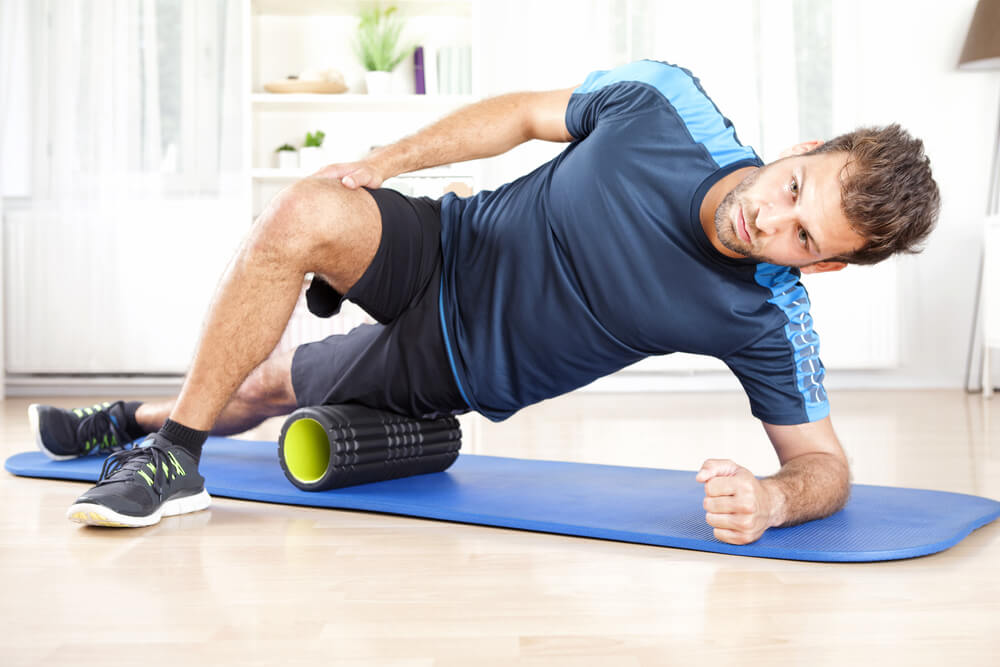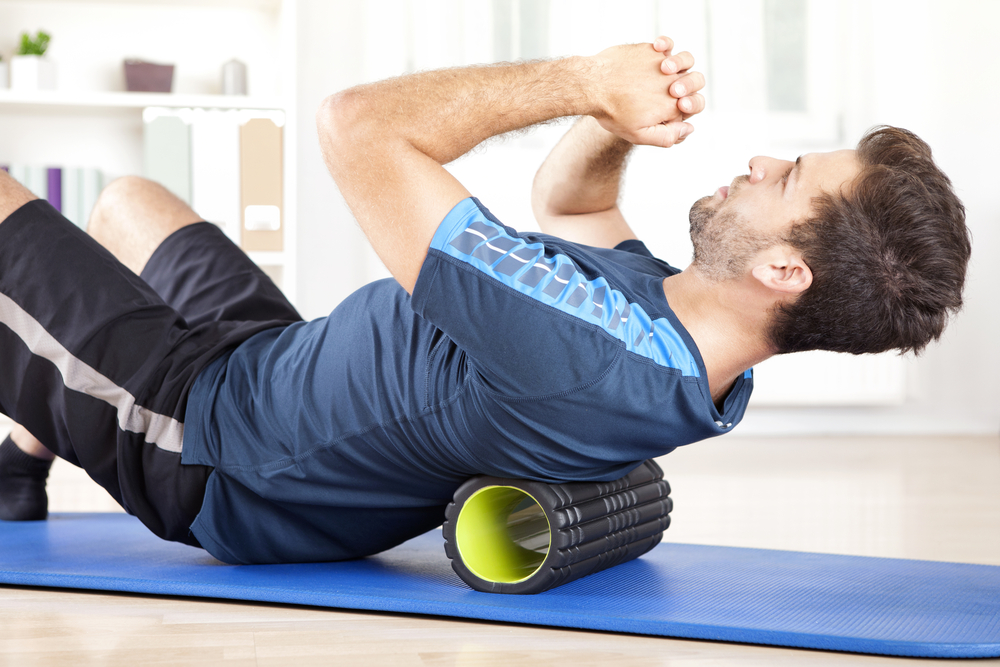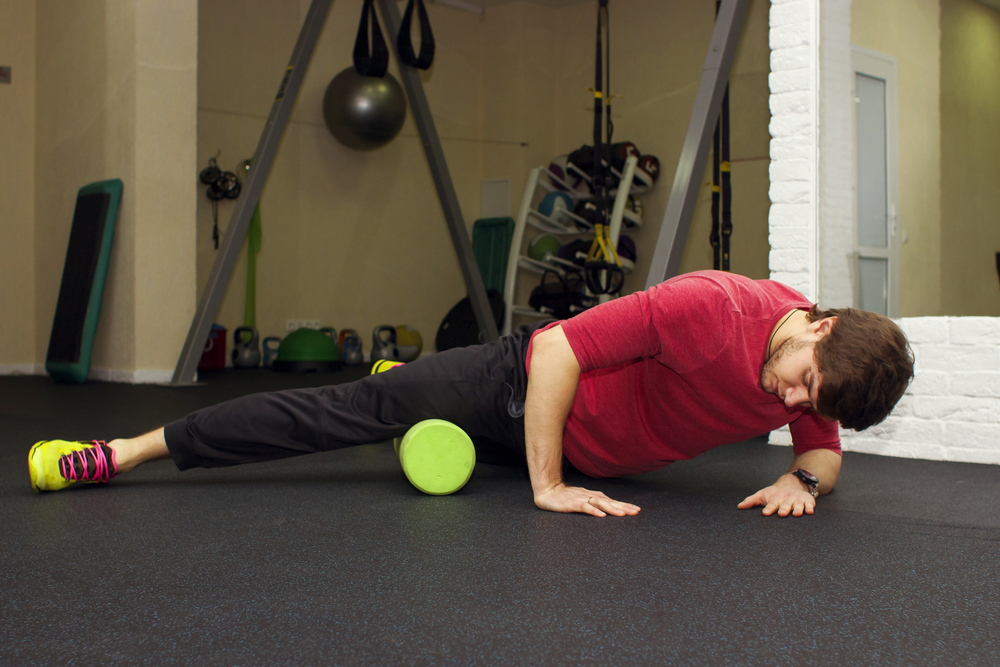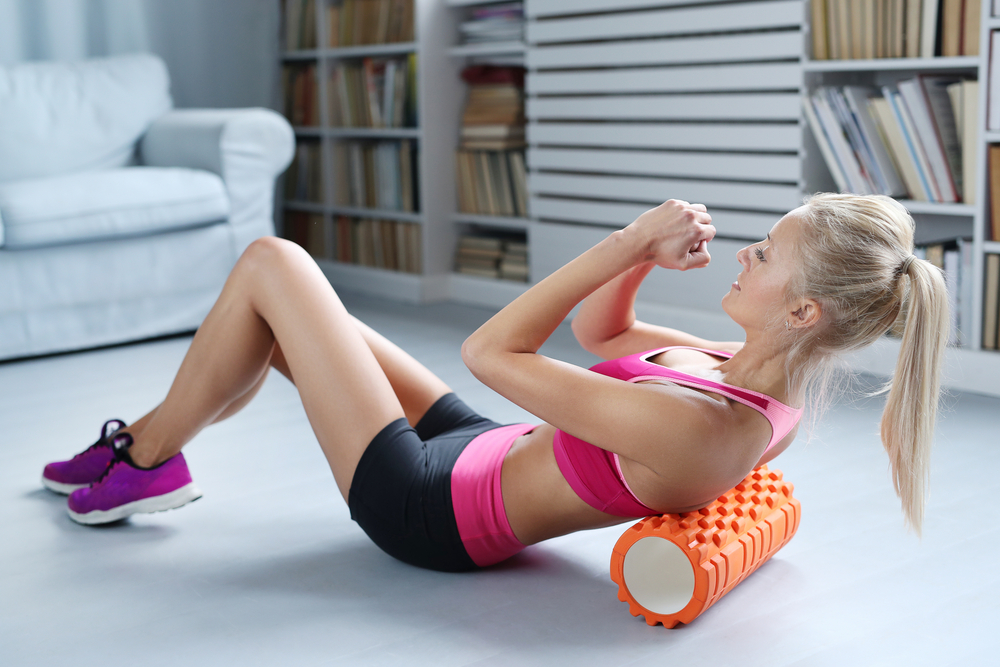
Do you own a foam roller? If not, then, chances are, you’ll likely run out and buy one after reading this. Why? Simple. Foam rolling can help you in a lot of different ways.
Many people are talking about foam rolling. It’s getting to be a pretty popular thing right now and there is a good reason for it: Foam rolling is beneficial in many ways. If that’s not enough, it’s easy to do and it can pretty much be done anywhere, including from the comfort of your own home.
There are a few things about foam rolling that you may not know, so we’re going to fill you in and give you all the info you need to know.
Enjoy!
What Is Foam Rolling?
Foam rolling is also known as self-myofascial release. It’s a way to relieve muscle tightness and trigger points by simply placing the foam roller on specific pressure points in the body and rolling it out with added pressure. It aids in the recovery of muscles and helps to get them back to normal function.
Therapists, coaches and pro athletes were at one point the only people who used foam rolling. It has since morphed into a self-help practice for everyday people of all fitness levels.
Your Fascia Is More Important Than You Think
The superficial (or connective) fascia is a type of tissue that’s located just below the skin. It wraps around and connects the muscles, bones, blood vessels and nerves in your body.
To give you a better understanding (and a gross visual), imagine when you peel the skin off of a chicken before you’re going to cook it. The white web-like tissue just under the skin that tends to give you trouble and will not release from the meat is the fascia.
Muscle and fascia together make up the myofascial system. This system has been long neglected by many until recent years when therapists and those in sports medicine realized that it is actually a very important part of our health.
Who would have thought?
For many reasons such as injuries, lack of movement and lack of stretching, the fascia becomes bound and stuck together. This is known as a fascial adhesion. It can produce results such as restricted movement in the muscles and even the appearance of cellulite in women.
Yep, it’s true!

How Foam Rolling Works
Myofascial release by use of a foam roller is a technique where you use gentle and sustained pressure over the muscles while applying traction to the fascia. This technique will release the fascia and break down the adhesions between the muscles, skin and bones, leaving you to move more freely and with less pain. It can also be used to treat IT band syndrome. Of course, IT band syndrome is related to the fascial issue.
Foam rolling works by digging into those adhesions, breaking them up and releasing the bound fascia, leaving you with healthy fascia and better movement in the body indefinitely.
Benefits Of Foam Rolling
Foam rolling has a ton of benefits that you may not even know about! Like what? Keep reading!
It Could Relieve Stress
After a hard day at work or even a tough workout, your body can feel pretty tired, wound up and stressed out. Foam rolling is a great way to relieve that stress by massaging out any knots in your muscles and helping you to relax and wind down.
It Can Help Improve Circulation In Your Body
Studies show that foam rolling has positive effects on the circulation in the body. By applying pressure and constant movement with the foam roller, you can expect improvements in the function of the arteries by stimulating the nerve receptors and by causing the blood vessels to dilate. This increases the blood flow.

It Returns The Lactic Acid To The Body Much Faster
I’m sure you have seen plenty of lifters rubbing their muscles after a session. They are not just doing it for their health.
Wait, yes they are!
What this does is it helps the lactic acid move away from the muscles and back into circulation. When you have this build up of lactic acid after a workout, it can lead to muscle cramping and the start of fatigue. Foam rolling helps the lactic acid move along quickly.
It’s Great For Spinal Health
When done on a regular basis, certain exercises performed with the foam roller can ensure spinal alignment and muscular balance along the spine.
It Could Help To Reduce Cellulite
After all the money spent on cellulite creams and treatments, it is nice to know that something as low cost as a foam roller can really work. As the fascia pulls downward on the skin, it can create that dimple-like appearance we all like to call cellulite. Foam rolling helps to stretch and release that connective tissue and break it up. This will release the skin from being pulled down by bound fascia.
It Could Improve And Promote Flexibility
Certain exercises performed with a foam roller can improve your flexibility in many of the muscles of your body, especially the hip flexors.
It Saves You Money
You can usually get a decent foam roller for around $15. Now that’s a bargain! Why? Simple. It’s nothing compared to getting regular massages, cellulite treatments and therapies for your sore or injured muscles. A foam roller can also save you money in the long run by preventing many injuries due to the lack of flexibility and spinal stability. I’m sure that over time, you will find that there are even more benefits than these ones.
When Is The Best Time To Use Your Foam Roller?
If you’ve been around fitness for a while, you have likely heard that foam rolling should be done before your workout to ready your muscles for exercise by increasing the circulation and activation.
It’s very true that foam rolling will increase the blood flow, but it also activates the parasympathetic nervous system, which is responsible for helping you to relax, calm down and unwind. Why is that not a good thing? Simple. The reason is because who wants to be relaxed prior to a tough workout? Not me. I’d just get sleepy and go lay on a waiting couch and take a nap.
As a result, instead of foam rolling before your workout and getting all relaxed, try some dynamic stretching and get pumped up like you should be. Try foam rolling after your workout instead. That way your muscles are hot and ready to do what you want them to do, and you will have a better chance of releasing any fascial adhesions because fascia is also more pliable when the body is warmed up.
If that does not tickle your fancy and you are the type to head right to the shower after your last rep, you can also try foam rolling at night, just before bed. In that case, I would suggest using the foam roller after a hot bath or shower for the same reasons (warming up the fascial and muscles). This will also help you relax and get into a deep and restful sleep.
There really is no wrong time, and if you have tried any of the three times mentioned, you’re not alone and you are not wrong. Do what suits you best. But, if you do it prior to your workout, just know that you will not get the full effects of foam rolling with cold muscles and cold fascia.

Does The Pattern On The Foam Roller Make A Difference?
Believe it or not, it actually does make a difference! When purchasing your foam roller, you want the grid to be as lumpy and bumpy as possible. Why? The reason is because you will have a better chance of digging down to the muscles with it.
A foam roller that is smooth on all sides still has many benefits. For instance, when you are using it for stretching exercises it can be useful. But, if you are leaning more towards myofascial release, the bumpier the better.
What Size Of Foam Roller Should You Get?
That depends on you and your preferences. For instance, if you’ve got the foam roller under your lower back, depending on the size of it, you could be going for an uncomfortable extension and so a large foam roller may not suit you.
Don’t be afraid to go to your local sporting goods store and try out different foam rollers. Make sure you buy one that is fit for your specific goal. There are some for exercise and there are some specifically for myofascial release.
A Few Foam Rolling Techniques For Myofascial Release
Now that you know all the specifics of foam rolling, let’s give your foam roller a whirl and try some of the most common and beneficial techniques:
IT Band
The IT band is also known as the Iliotibial Tract. This is a ligament that runs down the side of your body from just below the hip to the shin.
Lie on your side and place the foam roller just under your hip. Your hands should be on the floor to help you balance. Slowly roll the foam roller up and down the side of your thigh from the knee to the hip joint. Repeat for 30 seconds and then switch to the opposite side.
Piriformis
This is a muscle that’s found deep in the booty, just below the glutes. It runs diagonally from your lower spine to the upper surface of the femur (thigh bone).
Sit on your butt on top of the foam roller. Cross your right leg over the left leg and lean to your right side. With your hands on the floor, roll back and forth for about 30 seconds and then repeat on the opposite side.
Lower Back
From a seated position, place the foam roller just under your lower back and lean back placing most of your weight on the lower back area. Cross your arms in front of you, lift your hips and dig in with your heels and roll back and forth for about 30 seconds.
Quadriceps
Lie face down on the floor, support your weight with your hands and place the foam roller under one thigh with your foot raised off the floor. Shift most of your weight to the leg and use your hands to roll your body back and forth. Repeat on the opposite leg.
Hamstrings
From a seated position, place the foam roller underneath one leg by lifting your body off the floor (or a chair) with your hands. Slowly lower your weight onto the roller and relax the leg as much as you can then roll forwards and backward for about 30 seconds. Repeat on the opposite side.
Calf Roll
Sit on the floor, extend your legs straight in front of you and place the foam roller right at the top of your calf muscles. You can either do one calf at a time or both together. Lean back on your hands, lift your butt off the floor and roll forwards and backwards for about 30 seconds.
Conclusion
Foam rolling can be very beneficial in a lot of different ways. If you’ve never tried it, you may want to pick one up and give it a shot. It’s such a simple product that can give you great results whether you are looking to get some deep stretches in, release some fascia, get pain relief, muscle recovery or even blast some cellulite. With all of the perks, it’s no wonder why so many people are picking up these inexpensive products.
By Heather Neff, CPT
Latest posts by Terry M (see all)
- Garage Gyms - Aug 1, 2018
- Kettlebells – Why They Should Be Added To Your Routine. - Jul 24, 2018
- Weight Belts: What Are They Really For? - May 31, 2018










